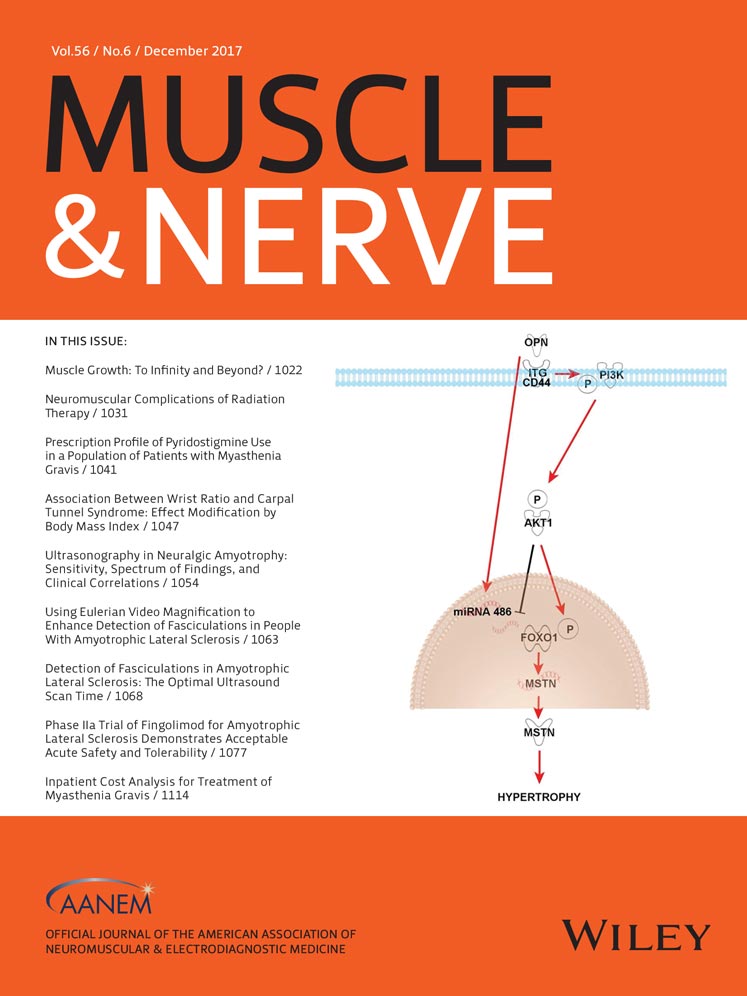Detection of fasciculations in amyotrophic lateral sclerosis: The optimal ultrasound scan time
Funding: This study was supported by National Health and Medical Research Council of Australia grant No. 1037746 (to Forefront, a collaborative research group dedicated to the study of motor neuron disease); International Federation of Clinical Neurophysiology Research Scholarship (to Y.-I.N., K.S., and J.M.M); Nakabayashi Trust for ALS research (to Y.-I.N.); 2015 Australian Endeavour Executive Fellowship (to N.S.); University of Sydney Post-Doctoral Fellowship (to W.H.).
Conflicts of Interest: The authors have no competing financial interests. Prof Kiernan serves as Editor-in-Chief of the Journal of Neurology, Neurosurgery, and Psychiatry.
ABSTRACT
Introduction
This study seeks to elucidate the optimal scan time to detect fasciculations by using ultrasound in the diagnosis of amyotrophic lateral sclerosis (ALS).
Methods
The intervals between fasciculations were recorded from tongue, abdominal, and limb muscles in ALS patients, incorporating assessment of the cumulative probability of 2 fasciculations occurring.
Results
From prospective studies of 228 muscles from 19 ALS patients, fasciculations were detectable in 68% of patients. The longest interfasciculation interval recorded was 81.4 s in the hand muscle. The cumulative probability of 2 fasciculations occurring was calculated as ≥0.9 in all muscles during a period of 60 s.
Discussion
A definition of 2 or more fasciculations occurring during a scan time of 60 s reliably allowed detection of fasciculations in ALS. Muscle Nerve, 2017




